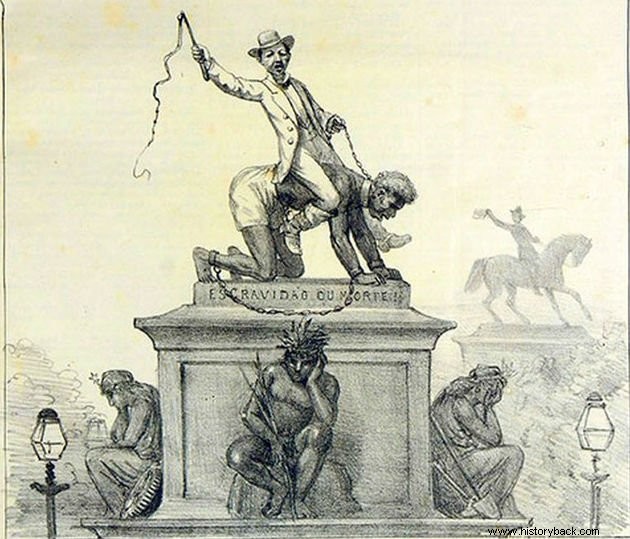The Law of Sexagenarians or Saraiva-Cotegipe Law (n.º 3.270), corresponds to one of the Abolitionist Laws, alongside the Eusébio de Queirós Law, the Free Womb Law and the Golden Law.
It was enacted on September 28, 1885 and granted freedom to slaves aged 60 or over.
Abstract
In 1884 the Sexagenarian Law was introduced in Parliament by the senator and minister Manuel Pinto de Sousa Dantas (1831-1894), known as Senador Dantas.
On one side were the abolitionists, who envisioned the end of slavery in Brazil without compensation to slave owners.
On the other hand, the landowners who formed the country's agricultural elite, mostly slaveholders, who felt intimidated by the measures proposed by abolitionist politicians. They wanted financial compensation for the properties they would lose.

Senator Dantas' proposal proposed assistance to freedmen, creation of agricultural colonies and freeing all slaves over 60 years old, without compensation to the farmers.
The project sparked a great deal of controversy. In this way, farmers and liberals took a stand against the approval of the law, which remained under debate for a year.
The law was only passed when Senators José Antônio Saraiva (1823-1893) and Barão de Cotegipe (1815-1889) proposed an amendment that increased the length of service to indemnify the owner.
Criticism
Note that this law was one of the steps towards freedom from slave labor in Brazil. However, it is considered by many a retrograde law that had little effect, since the slaves lived in precarious conditions and the average life was approximately forty years.
In addition, according to the law, the freed slave should grant another three years of free work or until he turns 65 to the boss, as a form of compensation.
Another important point to note is that the Sexagenarian Law benefited, to a large extent, the farmers, since black people over 60 years old could no longer bear to carry out heavy work.
In spite of this, the Sexagenarian Law was important for achieving the end of slave labor in Brazil.
See also:Abolition of Slavery in BrazilAbolitionist Laws
The abolitionist laws are a set of three laws that were intended to abolish slavery gradually and, if possible, without granting compensation to farmers.
Each law was defended and promoted by a group of intellectuals, blacks, forros, linked to Abolitionism.
Joaquim Nabuco (1849-1910) and José Patrocínio (1854-1905) stood out in this movement and founded in 1880, the “Brazilian Society Against Slavery” , in Rio de Janeiro. In a short time there would be several of these societies spread across the country.
Thus, in addition to the Sexagenarian Law,three abolitionist laws stood out:
- Eusébio de Queirós Law (Law nº 581):enacted in September 1850, it prohibited the intercontinental slave trade, which had little effect, as Portugal continued to bring black Africans to the country.
- Law of the Free Womb (Law nº 2040):enacted in September 1871, it granted freedom to the children of slaves born after that date.
- Golden Law (Law No. 3,353):enacted in May 1888, it granted freedom to slaves in Brazil.
End of Slavery
The end of slavery would effectively take place with the sanction of the Lei Áurea, signed by Princess Isabel, daughter of Dom Pedro II, on May 13, 1888.
In this sense, it is worth remembering that even the Lei Áurea did not foresee the consequences of this act for the approximately 700,000 more enslaved blacks who still existed in the country.
Despite Princess Dona Isabel having several education and inclusion projects, there was not enough time to put them into practice, due to the republican coup. During the Republic, the abandonment continued.
Thus, Afro-descendants still suffer from the lack of public policies for social inclusion, in addition to numerous prejudices, such as racism.
In effect, the Lei Áurea granted the right of freedom to slaves, but did not provide conditions for them to live in a dignified manner like whites. With no options left, many slaves continued to work on the plantations.
Curiosities
- In downtown Rio de Janeiro there is a street named after Senador Dantas.
- The town of Floresta, in Rio Grande Sul, changed its name to Barão de Cotegipe when it was elevated to a municipality in 1965, in memory of the politician and his law.
Read more:
- Slavery in Brazil
- Bill Aberdeen Act
- Black Brazilian Personalities
- Racism in Brazil
- Black Consciousness
